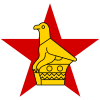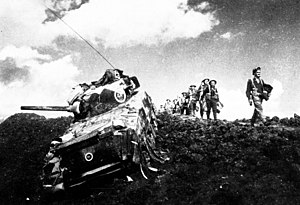| History of Zimbabwe | ||||||||||||||||||||||||||||||||||||||||||
|---|---|---|---|---|---|---|---|---|---|---|---|---|---|---|---|---|---|---|---|---|---|---|---|---|---|---|---|---|---|---|---|---|---|---|---|---|---|---|---|---|---|---|
 | ||||||||||||||||||||||||||||||||||||||||||
Ancient history
|
||||||||||||||||||||||||||||||||||||||||||
White settlement pre-1923
|
||||||||||||||||||||||||||||||||||||||||||

Southern Rhodesia, then a self-governing colony of the United Kingdom that was located in the now-independent Zimbabwe, entered World War II along with Britain shortly after the invasion of Poland in 1939. By the war's end, 26,121 Southern Rhodesians of all races had served in the armed forces, 8,390 of them overseas, operating in the European theatre, the Mediterranean and Middle East theatre, East Africa, Burma and elsewhere. The territory's most important contribution to the war is commonly held to be its contribution to the Empire Air Training Scheme (EATS), under which 8,235 British, Commonwealth and Allied airmen were trained in Southern Rhodesian flying schools. The colony's operational casualties numbered 916 killed and 483 wounded of all races.
Southern Rhodesia had no diplomatic powers, but largely oversaw its own contributions of manpower and materiel to the war effort, being responsible for its own defence. Rhodesian officers and soldiers were distributed in small groups throughout the British and South African forces in an attempt to prevent high losses. Most of the colony's men served in Britain, East Africa and the Mediterranean, particularly at first; a more broad dispersal occurred from late 1942. Rhodesian servicemen in operational areas were mostly from the country's white minority, with the Rhodesian African Rifles—made up of black troops and white officers—providing the main exception in Burma from late 1944. Other non-white soldiers and white servicewomen served in East Africa and on the home front within Southern Rhodesia. Tens of thousands of black men were conscripted from rural communities for work, first on the aerodromes and later on white-owned farms.
World War II prompted major changes in Southern Rhodesia's financial and military policy, and accelerated the process of industrialisation. The territory's participation in the EATS brought about major economic and infrastructural developments and led to the post-war immigration of many former airmen, contributing to the growth of the white population to over double its pre-war size by 1951. The war remained prominent in the national consciousness for decades afterwards. Since the country's reconstitution as Zimbabwe in 1980, the modern government has removed many references to the World Wars, such as memorial monuments and plaques, from public view, regarding them as unwelcome vestiges of white minority rule and colonialism.